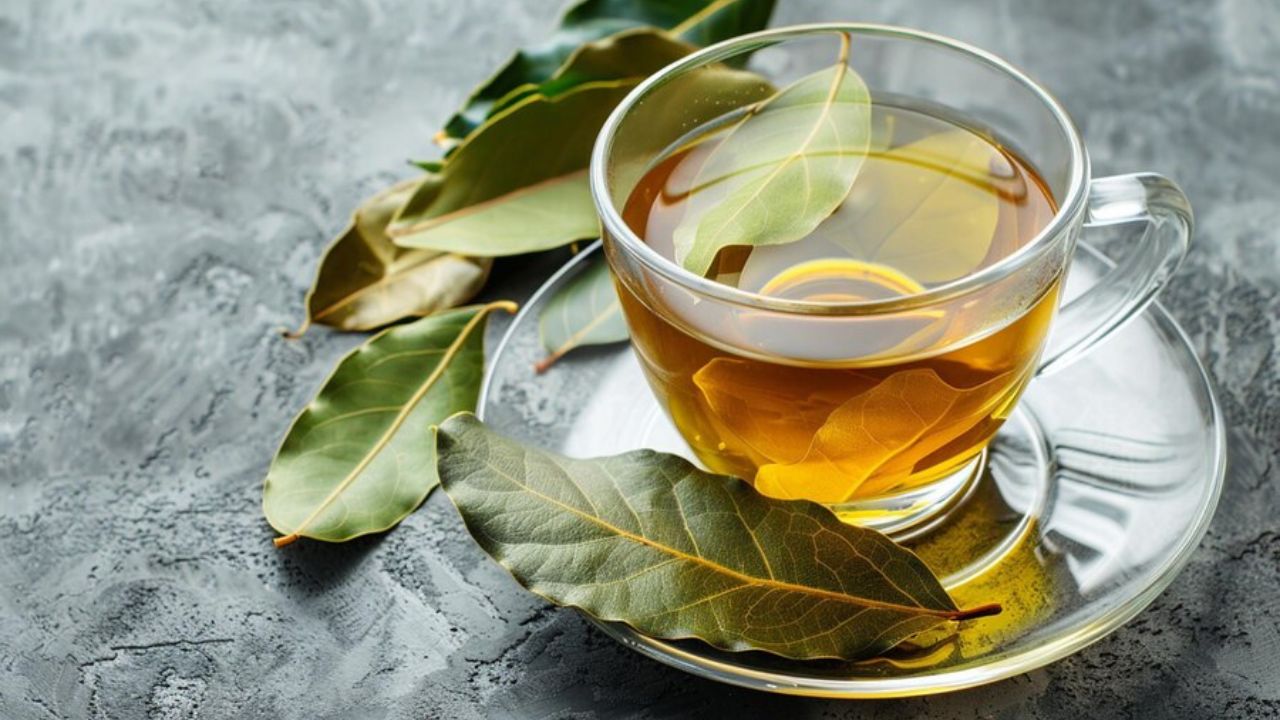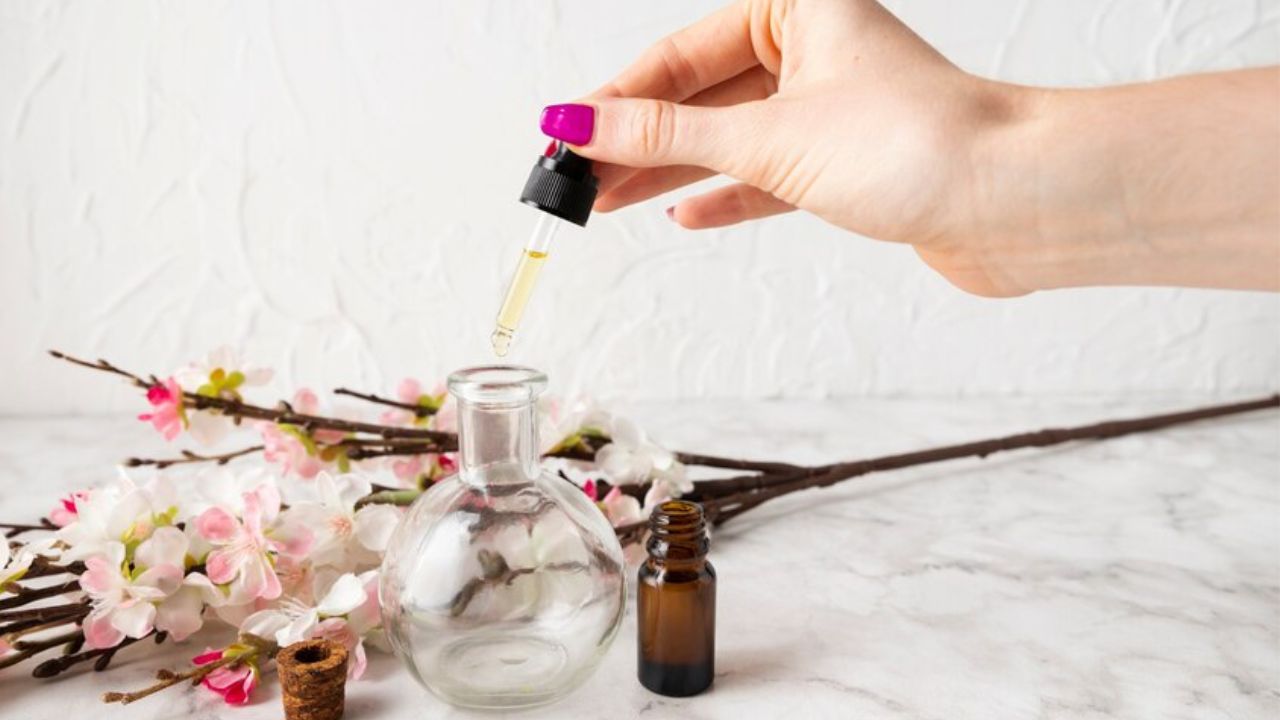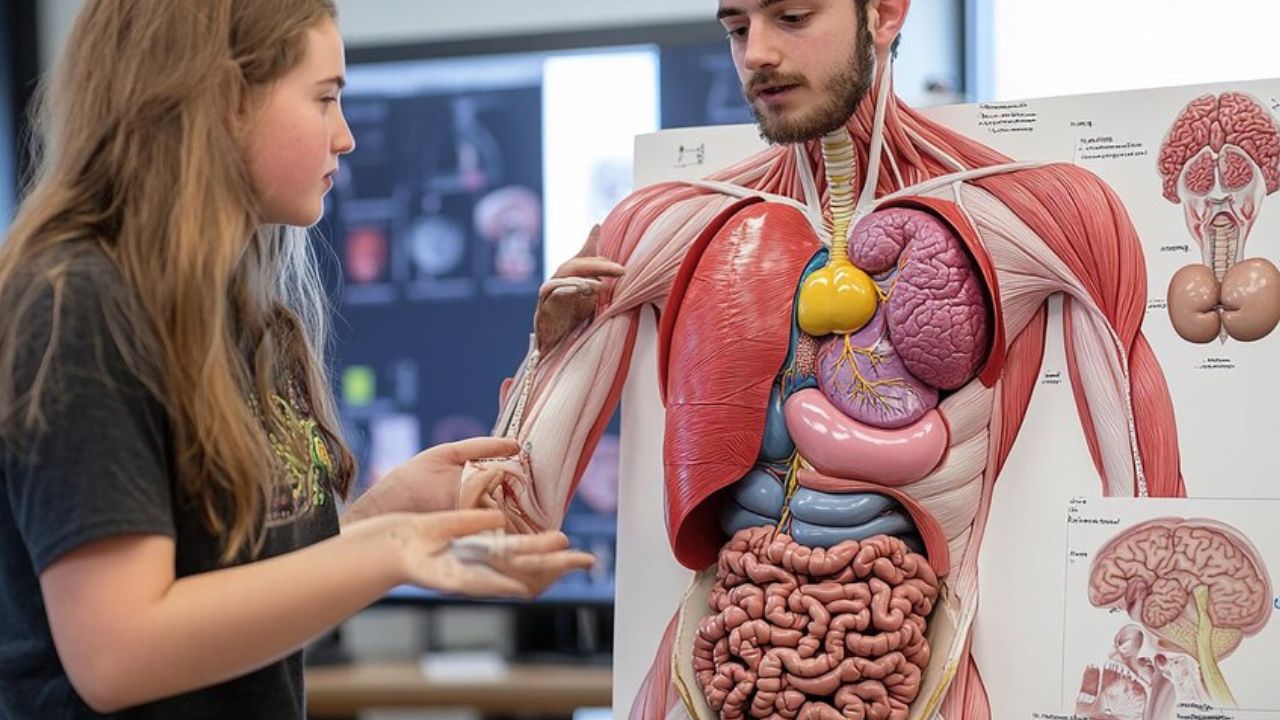Health
Physical Fitness: Your Ultimate Guide to a Healthier Life

Physical fitness is essential to living a healthy, meaningful life, not just a trendy catchphrase. Everyone can benefit from physical exercise, whether their goals are to increase muscle strength, improve mental health, or improve cardiovascular health. Let’s explore the realm of physical fitness, including its components, advantages, and methods for incorporating it into your everyday routine.
Definition of Physical Fitness
The ability of your body to carry out daily tasks with maximum strength, endurance, and performance is referred to as physical fitness. It combines a number of different physical attributes, including flexibility, strength, muscular mass, and cardiovascular endurance, with body composition.
Importance of Physical Fitness
Why is physical health so vital? It’s about feeling good and enjoying a longer life, not simply about looking nice. Frequent exercise can raise mental well-being, reduce the risk of developing chronic illnesses, and improve overall quality of life. Prioritizing physical fitness is more important than ever in a world where inactive habits are increasingly the norm.
Benefits of Physical Fitness
Physical Health Benefits
Cardiovascular Health
Regular physical activity lowers the risk of heart disease, strengthens the heart, and enhances blood circulation. Running, cycling, and swimming are great exercises to maintain optimal cardiovascular health.
Muscle and Bone Strength
Exercises that build and maintain muscle mass include bodyweight exercises and weightlifting. They also increase bone density, which lowers the chance of osteoporosis with aging.
Mental Health Benefits
Stress Reduction
A natural way to reduce stress is to exercise. The body naturally produces endorphins, which are known to elevate mood, when it is physically active. You can feel less worried and more at ease after a vigorous workout.
Improved Mood
Exercise on a regular basis has been demonstrated to reduce anxiety and depressive symptoms. It can raise your sense of self-worth and enhance your general wellbeing.
Components of Physical Fitness
Cardiovascular Endurance
The capacity of your heart and lungs to provide oxygen to your muscles over an extended period of physical exercise is known as cardiovascular endurance. Running, swimming, and cycling are exercises that help strengthen this element.
Muscle Strength
Muscle Endurance
The capacity of a muscle to withstand prolonged, repeated contractions is known as muscular endurance. Strengthening your muscles with exercises like rowing and circuit training can help.
Flexibility
The range of motion surrounding a joint is called flexibility. Yoga and stretches can help preserve and enhance flexibility.
Body Composition
The ratio of fat to lean mass in your body is called body composition. A balanced diet and consistent exercise can assist you in reaching your ideal body composition.
Developing a Fitness Plan
Setting Realistic Goals
Creating a successful fitness plan starts with setting attainable fitness goals. Whether your goal is to gain muscle, reduce weight, or increase endurance, establishing specific goals will help you stay motivated.
Assessing Current Fitness Level
Determine your current level of fitness before beginning any exercise program. This might assist you in tracking your development over time and identifying areas that require work.
Choosing the Right Exercises
It’s important to select workouts that fit your interests and ambitions. A well-rounded workout regimen needs to incorporate a variety of aerobic, strength, and flexibility exercises.
Types of Physical Exercises
Aerobic Exercises
Running
Enhancing cardiovascular endurance by running is highly recommended. It’s doable practically anywhere, with very little equipment needed.
Swimming
Swimming is easy on the joints and offers a whole-body workout. If you want to increase your cardiovascular fitness without the negative effects of jogging, this is a great alternative.
Strength Training
Weight Lifting
Lifting weights increases strength and muscle mass. Resistance bands, machines, or free weights can all be used for it.
Bodyweight Exercises
Without the use of equipment, bodyweight exercises like planks, squats, and push-ups are good for developing strength.
Flexibility Exercises
Yoga
Yoga incorporates meditation, breathing techniques, and physical postures. It enhances mental clarity, strength, and flexibility.
Stretching
Frequent stretching enhances overall performance in physical activities, helps preserve flexibility, and guards against injuries.
Nutrition and Physical Fitness
Importance of a Balanced Diet
Your body gets the nutrients it needs from a balanced diet to function and recuperate after exercise. It consists of a wide range of items from every dietary group.
Hydration Tips
Maintaining proper hydration is crucial for both peak performance and recuperation. To stay hydrated, drink water prior to, during, and after exercise.
Pre- and Post-Workout Nutrition
The appropriate diet can improve recovery and performance both before and after exercise. Meals should be had before exercise to provide energy from carbs and after exercise to repair muscles with protein.
Common Mistakes in Fitness Training
Overtraining
Although pushing oneself is vital, overtraining can result in burnout and injury. It’s critical to pay attention to your body and schedule relaxation days.
Skipping Warm-Ups and Cool-Downs
Warm-ups lower your chance of injury and prime your body for exercise. Cool-downs speed up your body’s healing process and ease tight muscles.
Ignoring Rest Days
Days of rest are crucial for muscular growth and recovery. In between sessions, they let your body rebuild and strengthen itself.
Staying Motivated
Tracking Progress
Monitoring your development can be quite inspiring. Track your efforts and progress with a journal or fitness app.
Finding a Workout Buddy
Exercise can be more fun and make you more responsible when you do it with a friend. It works wonders for maintaining consistency and motivation.
Varying Your Routine
Changing up your training routine keeps your body engaged and helps you avoid monotony. To keep things interesting, experiment with different training routines or new activities.
Fitness Myths Debunked
Spot Reduction
Many people think that by focusing on certain areas, fat will be reduced in those areas. But fat loss is not confined; it happens all over the body.
No Pain, No Gain
Pain isn’t an indication of a successful workout, even though some discomfort is expected, especially when trying new exercises. To prevent damage, pay attention to your body.
Carbs Are Bad
Your body needs carbohydrates as an energy source, particularly while you’re exercising. Rather than cutting out carbs, concentrate on eating wholesome, complex ones.
Fitness for Different Age Groups
Children and Teens
Promoting physical exercise in kids and teenagers aids in the early development of healthy habits. Age-appropriate and enjoyable activities are essential.
Adults
To maintain general health and fitness, adults should strive for a combination of aerobic, strength, and flexibility workouts.
Seniors
Physical activity can enhance a senior’s general health, balance, and mobility. Walking and swimming are two particularly good low-impact exercises.
Incorporating Fitness into Daily Life
Making Small Changes
Over time, little adjustments like choosing the stairs over the elevator, might result in noticeable gains in fitness.
Active Commuting
If at all feasible, choose to bike or walk rather than drive to work. This might assist you in integrating exercise into your everyday schedule.
Utilizing Break Times
Take brief stretches or workouts during your regular routine or during breaks at work. Every action you take helps you reach your fitness objectives.
Home Workouts vs. Gym Workouts
Pros and Cons of Home Workouts
Exercise at home is flexible and convenient. They might not offer the variety and interpersonal contact of a gym, though.
Pros and Cons of Gym Workouts
Access to a large variety of equipment and classes is offered by gyms. Although they might cost more money and take more time than at-home workouts, they can also be inspiring locations.
importance of Rest and Recovery
Sleep and Muscle Repair
Sufficient sleep is necessary for the regeneration of muscles and general recuperation. In order to complement your fitness goals, aim for 7 to 9 hours of sleep each night.
Active Recovery Techniques
Low-intensity exercises like stretching and walking can aid in improving circulation and reducing muscular discomfort during active recovery.
Role of Technology in Fitness
Fitness Trackers
Heart rate, sleep habits, and activity levels can all be tracked with fitness trackers. They offer useful information to help you get the most out of your workouts.
Mobile Apps and Online Resources
Numerous apps and internet sources are available that provide inspiration, dietary guidance, and exercise schedules. These pieces of equipment might be a very beneficial complement to your fitness quest.
Conclusion
Being physically healthy is a journey rather than a goal. You can live a better, more active life by realizing its advantages and introducing a range of workouts into your regimen. Recall that the initial step is the most crucial. Put on your sneakers and start walking!
FAQs
How often should I exercise?
It is advised to perform muscle-strengthening exercises two or more days a week in addition to 150 minutes of moderate-intensity aerobic activity or 75 minutes of vigorous-intensity activity each week.
What is the best time of day to work out?
When working out regularly fits into your schedule, that’s the ideal time to do it. While some feel that working out in the evening helps them decompress, others prefer working out in the morning for a fresh start.
Can I get fit without going to the gym?
Of course! Bodyweight exercises, outdoor activities, and at-home workouts can all be quite successful. Selecting enjoyable exercises and maintaining consistency are crucial.
How do I prevent injuries during exercise?
Warm up before working out, use good form, start out at a lesser intensity, and increase it gradually to avoid injuries. Remember to stretch and cool down after working out as well.
What are some beginner-friendly exercises?
Walking, swimming, bodyweight workouts like push-ups and squats, and low-impact exercises like yoga are all suitable for beginners. As your strength and confidence develop, start out slowly and gradually increase the intensity.
Health
Benefits of Laurel Leaf Tea: The Ultimate guide

Laurel leaf tea is often overlooked as a natural remedy, yet it offers numerous potent health benefits. Brewed from bay laurel leaves, this fragrant tea provides powerful healing properties. Laurel leaf tea, long prized for its medicinal qualities in Mediterranean countries, is currently becoming more and more well-known worldwide. Let us explore the amazing advantages that this straightforward brew provides.
Rich in Antioxidants
Antioxidants, which are abundant in laurel leaf tea, are essential for shielding your cells from harm brought on by free radicals. Free radicals, unstable chemicals, contribute to cancer, heart disease, and other chronic illnesses. Regular consumption of Laurel Leaf Tea Benefits to helps counteract these toxic chemicals and supports optimal health for your body.
Supports Digestive Health
Experiencing bloating or experiencing dyspepsia? Laurel leaf tea could be the perfect calming solution for you. Laurel leaves include chemicals that aid with digestion, like cineol and eugenol. These substances facilitate easier digestion, lessen flatulence, and help break down food. After a large meal, this tea is often used by people to soothe their tummies and aid with digestion.
Boosts Immune System
This tea is a great way to support your immune system because of the laurel leaves’ antiviral and antibacterial qualities. Regular consumption may lower your risk of contracting common illnesses like the flu or colds. In addition to being rich in immune-boosting vitamins and minerals, laurel leaves also assist your body fight off infections more successfully.
Anti-inflammatory Properties
Laurel leaf tea can provide some help if you have illnesses like arthritis or persistent inflammation. The anti-inflammatory properties of the essential oils and antioxidants found in the leaves aid to lessen discomfort and swelling. Many individuals use laurel leaf tea as a natural way to treat the symptoms of inflammatory disorders.
Helps Regulate Blood Sugar Levels
Laurel leaf tea can help people with diabetes or prediabetes by adding it to their daily routine. According to studies, several of the chemicals found in laurel leaves may help control blood sugar levels. This suggests that consuming tea made from Laurel leaves may help avoid blood sugar rises, making it a possible natural diabetes treatment.
Improves Heart Health
Improved cardiovascular health has been associated with laurel leaf tea. The tea’s antioxidants and other health-promoting ingredients may lower bad cholesterol, enhance blood flow, and stave off heart disease. This tea has been shown to support heart health, which may lead to a longer, healthier life.
Conclusion
A little-known treasure in the field of herbal treatments is laurel leaf tea. This tea enhances digestion and lowers inflammation, among its many health advantages. It is an easy, all-natural approach to improve your health, and you will love adding its fragrant aroma to your daily routine.
FAQs
Can I drink laurel leaf tea every day?
Yes, drinking laurel leaf tea on a daily basis is generally harmless, but moderation is essential.
Does laurel leaf tea help with weight loss?
Although it might help with digestion, there is not enough data to say that it will significantly help with weight loss.
How do I make laurel leaf tea?
Just steep two to three dried laurel leaves in a ten-minute steep of hot water.
Are there any side effects?
For most individuals, laurel leaf tea is safe, but if you drink too much, you can have headaches or nausea.
Can pregnant women drink laurel leaf tea?
Pregnant women should ideally speak with a healthcare provider before ingesting laurel leaf tea.
Health
The Soothing Science of Aromatherapy: Harnessing Nature’s Fragrant Remedies

The Soothing Science of Aromatherapy is a time-honored method that improves mental, emotional, and physical health. Aromatherapy uses the natural scents of plants to influence our bodies and brains.Examples of this include the relaxing scent of lavender before bed and the energetic aroma of peppermint in the morning. Consequently, many people turn to this holistic therapy for relief from contemporary stress. But what exactly is the mechanism of action behind this approach, and why does it attract so many seeking stress relief?
What is Aromatherapy?
The Soothing Science of Aromatherapy highly concentrated plant extracts called essential oils to provide therapeutic effects. They can diffuse these oils into the air, apply them physically, or inhale them to create a specific atmosphere or mood.Every plant part, including the flowers, leaves, bark, and roots, can provide essential oils, each with a unique set of benefits. Essential oils can have significant impacts on the mind and body, ranging from increasing energy to lowering anxiety.
How Does Aromatherapy Work?
The skin’s ability to absorb essential oils contributes to aromatherapy’s effectiveness. Applying diluted versions of oils like eucalyptus or tea tree can help with bodily problems like respiratory disorders or tense muscles. The skin absorbs their ingredients and carries them into the bloodstream, providing benefits beyond a pleasing aroma.
Key Benefits of Aromatherapy
Numerous advantages of aromatherapy exist for both physical and mental well-being:
Reduces Stress and Anxiety
Essential oils like rose, chamomile, and lavender are well known for their relaxing properties. Diffusing these oils around your house or place of business can help you relax naturally by lowering tension and anxiety.
Boosts Energy Levels
Improves Sleep Quality
Essential oils like lavender, sandalwood, and frankincense can help create a calm environment that encourages deep, restful sleep if insomnia is your daily battle. Before going to bed, a few drops in a diffuser can have a significant impact.
Relieves Physical Pain
Anti-inflammatory qualities found in essential oils like eucalyptus and peppermint help relieve headaches, tight muscles, and even arthritis pain. These oils are frequently used by massage therapists to augment the therapeutic benefits of a massage.
How to Incorporate Aromatherapy Into Your Life
Aromatherapy can be incorporated into your everyday routine in a number of ways:
Diffusion: A diffuser for essential oils can be used to fill a room with aromas. This is the ideal way to infuse energy or create a peaceful environment while at work.
Inhalation: You can instantly improve your mood or reduce tension by just taking a deep breath from the bottle or dabbing some oil onto a piece of paper.
Topical Application: People can apply essential oils topically to the skin after diluting them in a carrier oil, such as coconut or jojoba, to ease physical discomfort or promote skincare.
Conclusion
Using aromatherapy is an easy and natural approach to enhance your general health by using the healing properties of plants. Whether you are looking for more energy, better sleep, or stress reduction, essential oils can provide a customized answer. Aromatherapy has many uses and calming effects, making it a must-try for anybody looking for natural health improvements.
FAQs
What is aromatherapy?
In aromatherapy, a holistic therapeutic modality, people use essential oils derived from plants through topical application or inhalation to enhance mental, emotional, and physical well-being.
How does aromatherapy help with stress?
Essential oils that influence the limbic system of the brain, which controls emotions, such as lavender and chamomile, offer relaxing qualities that help lower tension and anxiety.
Can aromatherapy improve sleep?
Yes, people commonly use oils like lavender and sandalwood to encourage relaxation, making it easier to fall asleep and achieve deeper sleep.
Is aromatherapy safe for everyone?
Although aromatherapy is generally harmless, those who have sensitive skin, allergies, or asthma should exercise caution. Before using essential oils topically, always dilute them and conduct a patch test.
How can I use essential oils at home?
Health
The Importance of a Gut Health Check: Why You Shouldn’t Ignore Your Gut

The Importance of a Gut Health Check influences your general health, but how often do you consider it? To ensure your digestive system functions properly, get a gut health check. Your gut plays a crucial role in more than just digesting food; it also affects your immune system and mental health. So, how can you listen to your intuition, and why is it important?
What is Gut Health?
Gut health refers to the equilibrium and functionality of the microbes residing in your digestive system. The bacteria commonly referred to as gut flora or gut microbiome are essential for proper digestion, absorption of nutrients, and immune system function. A healthy gut may prevent infections, control stress, and elevate your mood. However, when things go wrong, they can cause a variety of problems, including chronic diseases, inflammation, and bloating.
Signs Your Gut Health Might Be Off
Digestive Issues: Constipation, diarrhea, bloating, or gas may be signs of an unbalanced gut.
Frequent Illness: A weak stomach may be the cause of recurring colds or other diseases.
Mood Swings and Anxiety: A person’s mental health can be impacted by their gut health, as there is a strong correlation between the two.
Food Intolerances: An unhealthy gut may be the cause of discomfort while eating particular foods.
Skin Problems: Unbalances in the stomach can be linked to conditions like eczema and acne.
How to Perform a Gut Health Check
Evaluate Your Diet: Your gut may suffer from a diet heavy in processed foods, sweets, and poor in fiber. Following a meal, if you experience bloating or pain, your gut may not be working properly.
Track Your Digestive Patterns: Consider how frequently you have diarrhea, constipation, or irregular bowel movements. These may serve as important markers for gut health.
Monitor Your Energy Levels: Are you constantly tired? You may feel exhausted if you are unable to absorb vital nutrients due to poor gut health.
Use At-Home Testing Kits: A number of gut microbiome testing kits are now on the market that can tell you how healthy your gut is. These tools detect the bacteria in your stomach by analyzing your poo and offer helpful advice.
Ways to Improve Your Gut Health
Increase Fiber Intake: Whole grains, fruits, and vegetables are high in fiber and nourish the good bacteria in your stomach.
Eat Fermented Foods: Probiotics included in foods like yogurt, kimchi, and sauerkraut aid in the restoration of gut flora.
Stay Hydrated: Water consumption is crucial for digestive processes and gut lining health.
Manage Stress: Gut health can be adversely affected by ongoing stress. Deep breathing, meditation, and consistent exercise are among the techniques that help improve digestive and mental health.
Conclusion
Maintaining your general wellbeing as well as the health of your digestive system requires The Importance of a Gut Health Check Effective strategies to maintain gut health include changing your diet, listening to your body’s signals, and perhaps seeking medical advice. Recall that you are only as healthy as your stomach is.
FAQs
What are the signs of poor gut health?
Bloating, gas, diarrhea, constipation, recurrent infections, and even mood changes are common symptoms.
How can I improve my gut health?
Eating more fermented and fiber-rich foods, drinking enough of water, and controlling your stress levels can all help to enhance gut health.
What foods are bad for gut health?
Foods high in sugar, processed foods, and poor in fiber can all have a detrimental effect on gut health.
Can poor gut health affect my mental well-being?
Indeed, there is evidence linking gut health to mood disorders such as depression, anxiety, and others.
Is a gut health check necessary?
Yes, routinely monitoring your gut health can aid in preventing digestive problems and promoting general wellbeing.
-

 Celebrity10 months ago
Celebrity10 months agoJulia Rejean Moorhead: A Trailblazer in Her Field
-

 News11 months ago
News11 months agoThe Ever-Evolving World of News:Global Events Unfolding Today
-

 INFORMATION11 months ago
INFORMATION11 months agoUnderstanding Information: Its Role and Impact in Our Lives
-

 Sports11 months ago
Sports11 months agoGonzaga Basketball: The Rise of a College Hoops Powerhouse
-

 Sports11 months ago
Sports11 months agoThe Incredible Benefits of Sports: Boost Your Life on All Fronts
-

 Business10 months ago
Business10 months agoRogue Trader Rotate Grand Strategist:The Dynamic World of Trading
-

 Health11 months ago
Health11 months agoThe Ultimate Guide to Health: Tips and Strategies for a Healthier
-

 Technology8 months ago
Technology8 months agoFascinating Facts About Astronauts:The Ultimate Guide
